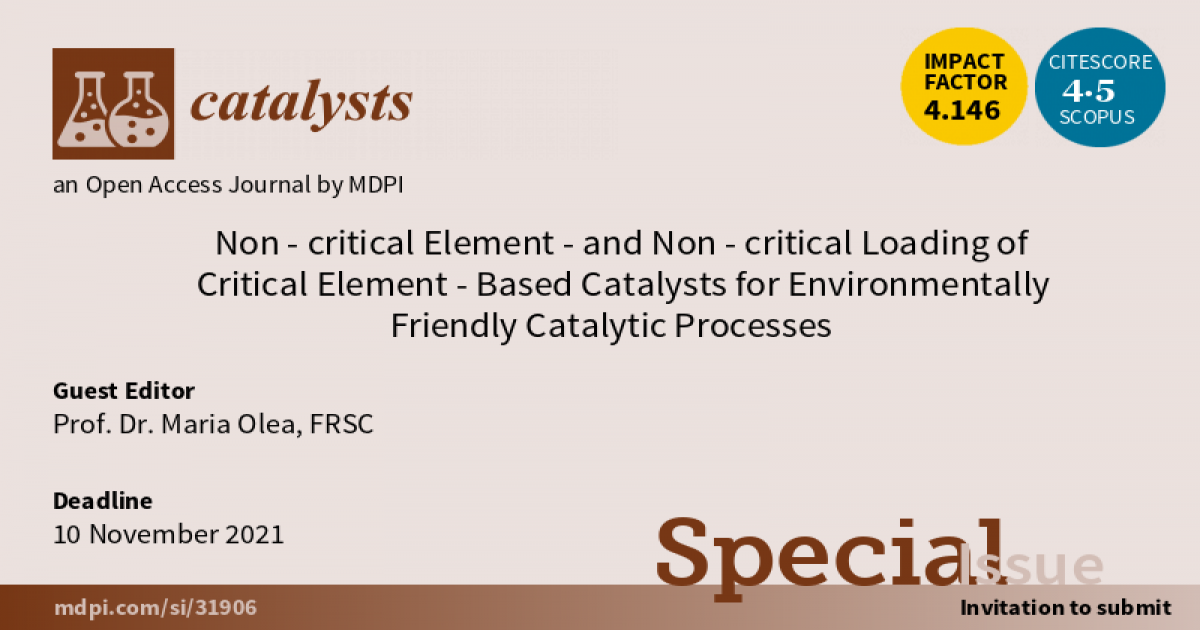Non-critical Element- and Non-critical Loading of Critical Element-Based Catalysts for Environmentally Friendly Catalytic Processes
A special issue of Catalysts (ISSN 2073-4344). This special issue belongs to the section "Catalytic Materials".
Deadline for manuscript submissions: closed (31 March 2023) | Viewed by 13257

Special Issue Editor
Special Issue Information
Dear colleagues,
Modern society has an ever-increasing demand for environmentally friendly catalytic processes, either for clean manufacturing of chemicals or for renewable energy production, elimination of environmental pollutants from air, water and soil or for waste conversion into useful products. Although noble metal-based catalysts have proven to be very efficient for all these environmentally friendly catalytic processes, due to their scarcity and cost, alternative catalytic technologies are being developed based on either their non-critical loadings or non-critical elements. This Special Issue is focused on “Non-critical Element and Non-critical Loading of Critical Element-Based Catalysts for Environmentally Friendly Catalytic Processes” with the aim to present the most recent and innovative scientific results in this field, regarding all aspects of design and formulation, preparation, characterisation, scale-up and engineering aspects for commercially applications.
Prof. Dr. Maria Olea, FRSCGuest Editor
Manuscript Submission Information
Manuscripts should be submitted online at www.mdpi.com by registering and logging in to this website. Once you are registered, click here to go to the submission form. Manuscripts can be submitted until the deadline. All submissions that pass pre-check are peer-reviewed. Accepted papers will be published continuously in the journal (as soon as accepted) and will be listed together on the special issue website. Research articles, review articles as well as short communications are invited. For planned papers, a title and short abstract (about 100 words) can be sent to the Editorial Office for announcement on this website.
Submitted manuscripts should not have been published previously, nor be under consideration for publication elsewhere (except conference proceedings papers). All manuscripts are thoroughly refereed through a single-blind peer-review process. A guide for authors and other relevant information for submission of manuscripts is available on the Instructions for Authors page. Catalysts is an international peer-reviewed open access monthly journal published by MDPI.
Please visit the Instructions for Authors page before submitting a manuscript. The Article Processing Charge (APC) for publication in this open access journal is 2700 CHF (Swiss Francs). Submitted papers should be well formatted and use good English. Authors may use MDPI's English editing service prior to publication or during author revisions.
Keywords
- Non-critical element catalysts
- Non-critical loading of critical element catalysts, preparation
- characterisation
- scale-up
- catalytic reactors and microreactors
- design
- formulation





